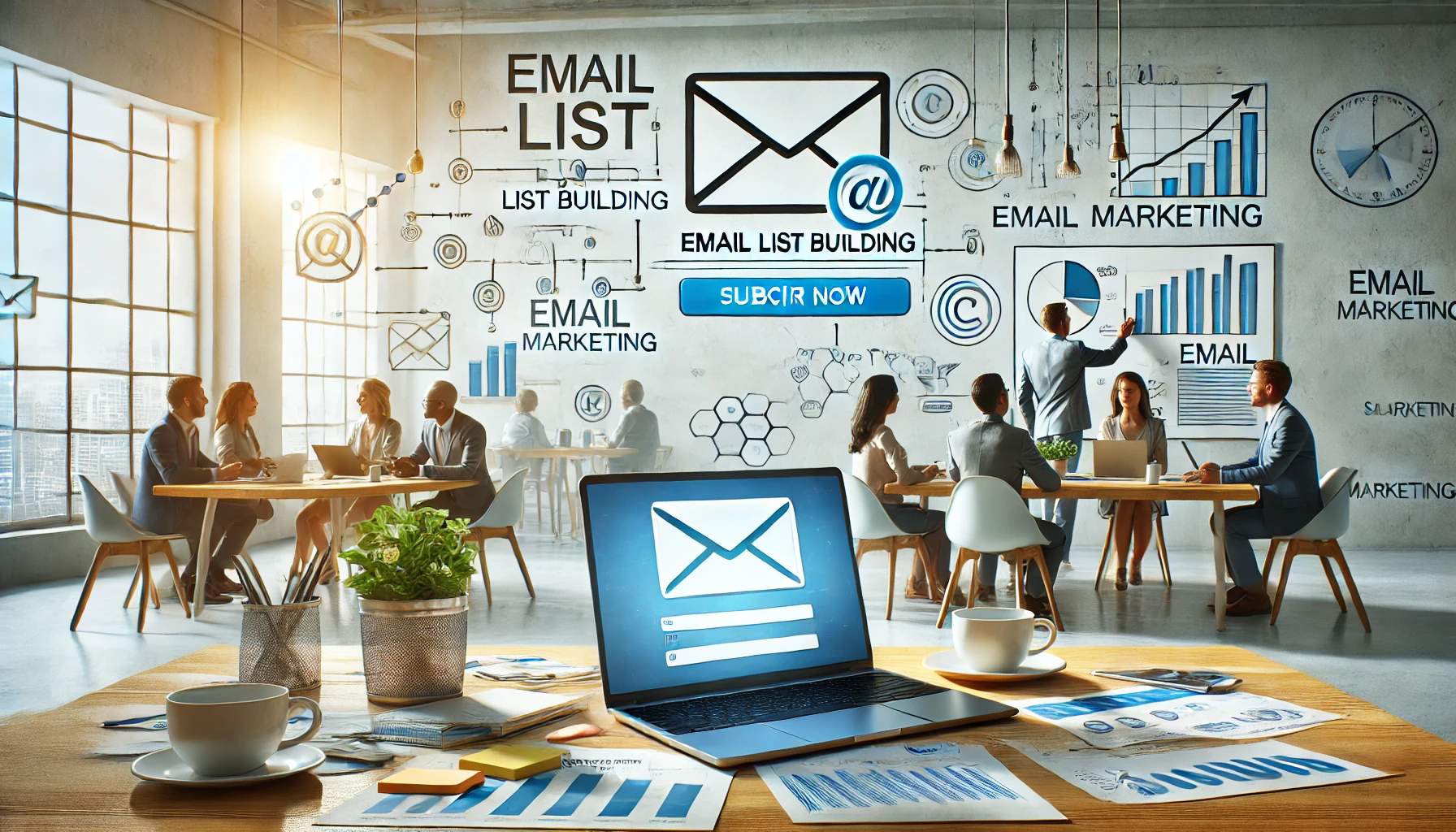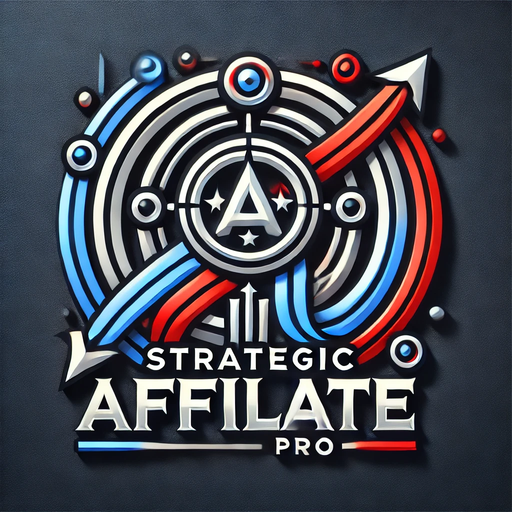When it comes to online marketing, understanding the basics of email list building is fundamental to any successful business strategy. Email marketing remains one of the most effective tools for growing your audience, generating leads, and driving sales.
Whether you are a small business owner, a blogger, or an entrepreneur, building an email list is crucial for maintaining direct communication with your audience. In this blog post, we will break down the basics of email list building, why it matters, and how you can get started.
Why Email List Building Matters
Before diving into the process, it is important to understand why email list building is a cornerstone of digital marketing. Here are a few key reasons:
- Direct Communication: Unlike social media, where algorithms decide what users see, email allows you to deliver messages directly to your audience’s inbox. This provides a more personal and controlled way to communicate.
- Ownership: You own your email list. Social media platforms can change their policies or algorithms at any time, but your email list remains a constant asset.
- High ROI: Email marketing has consistently been shown to have one of the highest returns on investment (ROI) compared to other marketing channels.
- Lead Nurturing: An email list allows you to nurture leads through targeted content and offers, ultimately converting subscribers into paying customers.
- Stability and Longevity: Trends come and go, but email has been a reliable form of communication for decades. Its effectiveness ensures you can rely on it for consistent results.
The Basics of Email List Building
Email list building is the process of collecting email addresses from potential customers or readers to establish and grow a contact list. This list is then used to communicate valuable content, offers, and updates. To begin, here are the essential steps:
1. Define Your Audience
Before collecting email addresses, you need to define your target audience. Who do you want to reach with your emails? Understanding your audience helps you create tailored content that resonates with their needs and interests. Consider demographics, pain points, and the type of solutions they are looking for.
For example, if you run a fitness blog, your audience might include individuals seeking workout plans, weight loss tips, and healthy lifestyle advice. Once you identify your audience, you can craft email campaigns that provide valuable solutions to their problems.
2. Choose an Email Marketing Platform
To start building your email list, you will need an email marketing platform to manage your subscribers and campaigns. Popular options include:
- Mailchimp
- ConvertKit
- Constant Contact
- AWeber
- GetResponse
These platforms provide tools for collecting email addresses, creating automated campaigns, and analyzing performance metrics. Choose a platform that fits your budget and offers features suitable for your needs.
3. Create a Lead Magnet
A lead magnet is a valuable resource or offer that you provide in exchange for a user’s email address. People are more likely to subscribe to your list if they receive something in return. Examples of lead magnets include:
- eBooks or guides
- Checklists or templates
- Free webinars
- Discount codes
- Free trials or samples
The key to an effective lead magnet is to make it relevant, valuable, and easy to access. For instance, if you run a photography business, you could offer a free guide on “10 Tips for Taking Stunning Portraits” as a lead magnet.
4. Design Opt-In Forms
Opt-in forms are the gateways to your email list. They allow visitors to enter their email addresses and subscribe to your list. Opt-in forms can be placed in various locations on your website, such as:
- Header or footer sections
- Pop-up forms
- Blog posts
- Landing pages
Make sure your opt-in form is visually appealing and highlights the benefits of subscribing. Use persuasive copy, such as “Sign up to receive exclusive tips and updates straight to your inbox!”
5. Create High-Quality Content
Content is the backbone of any successful email list-building strategy. Without high-quality content, people will have no reason to subscribe or remain on your list. Content can include:
- Blog posts
- Newsletters
- Tutorials
- Videos
- Product updates
The content you provide should align with your audience’s interests and address their pain points. Consistency is key—publish regularly to keep your audience engaged and coming back for more.
6. Promote Your Opt-In Forms
Once your opt-in forms are ready, you need to promote them to drive traffic and generate subscribers. Here are some effective strategies:
- Social Media: Share links to your lead magnet or opt-in form on platforms like Facebook, Twitter, Instagram, and LinkedIn.
- Blog Posts: Include opt-in forms within your blog posts to capture readers’ attention.
- Website Pop-Ups: Use timed pop-ups to encourage visitors to subscribe after they spend a certain amount of time on your website.
- Guest Posts: Write guest posts on other blogs and include a link to your lead magnet or landing page.
- Paid Ads: Use platforms like Facebook Ads or Google Ads to promote your lead magnet to a targeted audience.
- Webinars and Events: Host free webinars or online events that require registration, allowing you to collect email addresses.
7. Segment Your Email List
As your email list grows, it is important to segment your audience to deliver more personalized content. Segmentation allows you to group subscribers based on specific criteria, such as:
- Interests
- Behavior (e.g., past purchases)
- Demographics
- Engagement levels
For example, if you run an online store, you can create separate segments for customers who have purchased products versus those who are still considering a purchase. This enables you to send tailored messages that cater to each group’s needs.
8. Automate Your Email Campaigns
Email automation saves time and ensures that your subscribers receive timely messages. Set up automated workflows for various purposes, such as:
- Welcome Series: A series of emails that introduce new subscribers to your brand and offerings.
- Lead Nurturing: A sequence of emails that guide subscribers toward making a purchase.
- Abandoned Cart Emails: Emails reminding customers to complete their purchase after abandoning their shopping cart.
- Re-Engagement Campaigns: Emails targeting inactive subscribers to bring them back into the fold.
Automation ensures that your email marketing efforts are consistent and efficient, even as your list grows.

Advanced Strategies for Email List Building
As you become more comfortable with the basics, you can explore advanced strategies to accelerate your list growth and improve engagement.
1. Gamify Your Opt-In Process
Gamification is an excellent way to attract subscribers. Add interactive elements such as spin-the-wheel giveaways, quizzes, or competitions where participants must submit their email to play or win.
For example, offering a “spin-to-win” discount code in exchange for email sign-ups can create excitement while growing your list.
2. Collaborate with Other Businesses
Partner with complementary brands or influencers to co-host giveaways, webinars, or email promotions. This allows you to tap into each other’s audience and expand your reach.
3. Run Exclusive Campaigns
Offer limited-time access to exclusive content, products, or discounts only for subscribers. For example, an early-bird sale or sneak peek into a product launch can encourage sign-ups.
4. Leverage Referral Programs
Encourage your existing subscribers to refer friends in exchange for rewards, such as discounts, freebies, or loyalty points. Tools like ReferralCandy can automate this process.
5. Create Multi-Step Opt-Ins
Multi-step forms break the opt-in process into smaller steps, which often improves conversions. For instance, ask for the name first, then the email in a follow-up step.
6. Use Retargeting Ads
Target website visitors who didn’t opt-in on their first visit with retargeting ads. You can direct them back to a landing page that highlights the benefits of joining your list.
Best Practices for Long-Term Success
- Monitor Email Metrics: Track metrics like open rates, click-through rates, and unsubscribe rates to refine your strategy.
- Test and Optimize: A/B test subject lines, CTAs, and email designs to improve conversions.
- Clean Your List: Regularly remove inactive or invalid email addresses to maintain a high deliverability rate.
- Engage Continuously: Consistently deliver valuable content to keep subscribers active and invested in your brand.
Final Thoughts on Email List Building
Understanding the basics of email list building is essential for growing your audience and achieving your marketing goals.
By providing value, creating compelling offers, and promoting your opt-in forms effectively, you can build a strong and engaged email list over time. Remember to focus on quality over quantity, and prioritize delivering content that resonates with your audience.
As you implement these strategies, monitor your results and make adjustments to optimize your email marketing efforts.
With consistency and dedication, email list building can become one of the most powerful tools in your marketing arsenal. Start today, and watch your audience and business grow!
Enjoyed this article? Let’s continue the conversation on LinkedIn.


Hello and rich blessings Herman! your article on the basics of email list building is incredibly informative and well-structured. It perfectly highlights the importance of building an email list and offers practical steps to get started.
I especially appreciate the emphasis on quality content and personalized communication.
Your detailed explanations make it accessible for both beginners and seasoned marketers. I’m curious, what are some of the most effective lead magnets you’ve seen or used to attract high-quality subscribers?
Any specific examples or strategies you recommend for someone just starting out?
Thank you for sharing such valuable insights—this will definitely help many businesses unlock additional revenue.
Thank you so much for your kind words and rich blessings—it truly means a lot to me! I’m thrilled to hear that you found the article informative and practical. Your feedback inspires me to keep sharing valuable insights.
Regarding your question about lead magnets, I’ve found that the most effective ones often address a specific pain point or provide immediate value to the target audience.
Great insights on the importance of email list building in digital marketing! I appreciate the practical steps outlined for getting started.
It’s true that direct communication and ownership of an email list are crucial for any business.
One question I have is about segmentation: How do you recommend balancing personalization with not overwhelming the subscriber with too many tailored emails? Thanks for sharing such a comprehensive guide!
Here’s a thoughtful reply to their message:
Thank you for your kind words and thoughtful question! You’re absolutely right—finding the right balance with email segmentation is key to delivering value without overwhelming your subscribers.
One approach I recommend is starting with broad segmentation based on key factors like interests, behavior, or purchase history. For example, you might create segments for new subscribers, frequent buyers, or those interested in specific topics.
Then, focus on sending fewer but highly relevant emails to each segment. Instead of overloading subscribers with too many tailored emails, try a mix of:
Core emails that apply broadly to your audience (e.g., newsletters or major updates).
Segment-specific campaigns for content or offers that align with their preferences or behaviors.
It also helps to give subscribers control by allowing them to choose their email preferences (e.g., how often they want to hear from you or the types of content they’re interested in).
The key is to monitor engagement metrics closely—if open rates or click-throughs drop, it might be a sign to refine your frequency or content strategy.